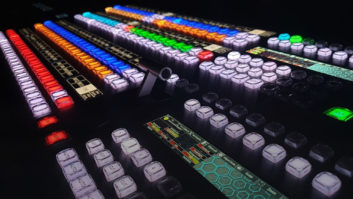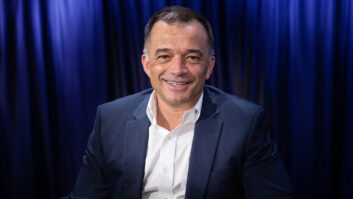Over the last few weeks, millions of viewers around the world have been enjoying the Winter Olympics from PyeongChang in South Korea.
According to the International Olympic Committee, this year’s Games has seen an increase of 14 per cent in programming.
The IOC also expects to see a major increase in viewers watching coverage of the Games on digital platforms, and has forecast it could be more than double that of traditional TV.
Certainly, this year’s Games has seen a huge increase in the technology being used by broadcasters to enhance the viewing experience. Kent Steffen, president of OTT services at CSG, tells TVBEurope broadcasters often see the Olympics as a chance to introduce new technology to viewers.
“The Olympics is always interesting because we see the next generation of technology coming into play,” he explains.
“You know it started back maybe 15 years ago with OTT and some of the new technology that came out with streaming. So it’s always fun from a tech perspective just because we get to see the latest and greatest, and everyone kind of pushes that.
“I think this year it’s pretty amazing,” Steffen continues. “If you look at NBC here in the States we’ve got about 1800 hours of content that’s running live and on-demand and they’re doing about 50 hours of VR which is interesting. They have 180 degree and 360 degree cameras and so you get kind of get kind of thrown into the middle of an event. You know you can only watch so much mixed doubles curling in VR!
“But they haven’t really taken the next step in the three dimensional overlays and personalised overlays. I think it’s good because we’re starting to see some of the potential of what virtual reality can do for sports. We’re at the beginning stages and it’s really fun because they’re trying to make VR available to everyone.”
Why does Steffen think broadcasters are giving their OTT services a bigger role than ever before? “I think one reason is the rise of mobility and broadband which means that people can take it outside the house and take it wherever they are,” he says. “Literally that changed the whole dynamic. We’ve seen that kind of push for the last four years. So much of the viewing which used to be the pay-TV model, has been pushed outside the home to the mobile side and that has changed things and made it much more acceptable because now viewers don’t have to go home in order to see what’s happening. So I think that’s a huge thing.”
Steffen says he believes the mobile viewing experience is becoming increasingly important to broadcasters. “Eurosport, the BBC, NBC, just about everyone that’s carrying the Olympics and the World Cup and the Premier League or Formula One are all moving to a world where their OTT offering is now centred around mobile an engagement, and how do you make the fans understand the sport,” he explains.
Another major change is the use of statistics, allowing fans that have never watched a certain sport before to understand what’s happening and become more engaged. “The Olympics are one of those events where there are so many sports and there are so many new sports that you my not watch on a regular basis like figure skating or curling,” continues Steffen.
“But you find yourself getting pulled into those things. So the broadcaster can do a great job with their storytelling and stats to make it really engaging even if the viewer has never even followed the sport before. OTT gives you the ability to do that in a personal way.”
“Sometimes what you want to watch is happening in the middle of the night in your time zone but OTT allows you to tune into the whole event or the highlights. I think mobility and on-demand have made this so much better from a fan perspective because you can get access to what you want to watch.”
2018 will see a feast of sport for viewers. In April, the Commonwealth Games take place in Melbourne, Australia, and later this year America and Europe once again battle it out in the Ryder Cup. But almost all eyes around the world will be on Russia this summer for the FIFA World Cup. How does Steffen think the innovations we’ve seen at the Olympics will affect how broadcasters tackle the football?
“I think the cool addition we’ve seen in the Olympics is that they broadcasters are putting a whole bunch of big data out there. They’re using cool augmented reality to bring us to such a level of information. I think the next step is going to be how do we personalise that information?,” says Steffen.
“For example, if I’ve got a fantasy league, I care about my fantasy stats they could overlay a lot of the broadcast. From a stats perspective, there’s really so many things that are being built into the ball, into the shin pads, into the stadiums. It’s really starting to add a whole new dimension to viewing, because now I don’t watch where the ball goes when a team scores a goal, I can see how fast they’re going, how fast the striker is compared to the defender he’s up against.
“I think that’s going to be a whole new dimension where the viewers are going to get really excited because they’re going to be very informed about sports they may not have followed their whole lives and it will bring new viewers to the sports.”







